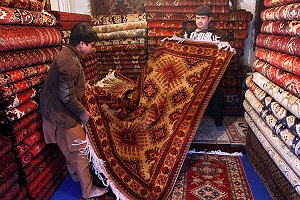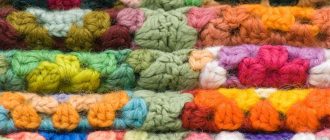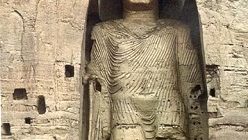Where do Afghan rugs and carpets come from? You might be surprised that most Afghan rugs on the market today were actually made in Pakistan. For more facts and information, read our guide…
The making of rugs is an age old Afghani tradition. However, with Afghanistan being war ravaged, many of the rug weavers have become refugees and have fled to Afghanistan. There they have continued their trade. Even the Afghans that did not flee and have continued to make rugs ship them to Pakistan to be exported.
While Afghan rugs and carpets are fairly inexpensive, shipping them to Pakistan often adds to the price of them. This is because of the risks of entire shipments being confiscated unless bribes are paid to the border guards.
The Afghan Rug
The typical Afghan rug is made in the north of Afghanistan by Turkmen weavers. Fifty years or so ago, they would have an octagonal figure called a gul that would be as wide as 16 inches. The rugs were wool on wool and the gul was displayed on a red background. As years have passed, the guls have become smaller and cottons may be blended with the wool. Now, usually only two colors are used on any one Afghan rug.
The guls have become only several inches across, and the colors most used are a bright red with a blue so dark that it can be mistaken for black. Still, the Afghan rug business survives, as these rugs are still hugely popular not only with Afghans but Americans as well.
One staple of Afghanistan is Baluchi rugs, most notably Baluchi prayer rugs. Made by Baluchi people, especially in western Afghanistan near Herat, Baluchi prayer rugs can be simple or ornate tribal pieces. Virtually all are made on wool foundations with synthetic dyes, and measure about 2′ 8″ by 4′ 7″.
Afghanistan has always produced a great number of kilims (flat-woven rugs). One type is produced in large quantity: the Maimana kilim from the north. These rugs are woven in a slit-tapestry weave, a type of flat weaving that leaves small gaps or slits between areas where one color leaves off and another begins. Their wool is rather coarse. These rugs are usually available in 8’ x 10’.
There are a small number of finely knotted rugs on silk foundations in the market which are called silk-warp Mauri rugs. One line of silk-warp Mauris is made in classic Turkmen Dulatabad designs with very small guls. Another type, made with a silk pile and a silk foundation, is in designs that represent the architecture of mosques.
These are all genuine Afghan rugs, though they may be made in Pakistan for the time being. If the war is ever over in Afghanistan, perhaps the weavers will come home.





